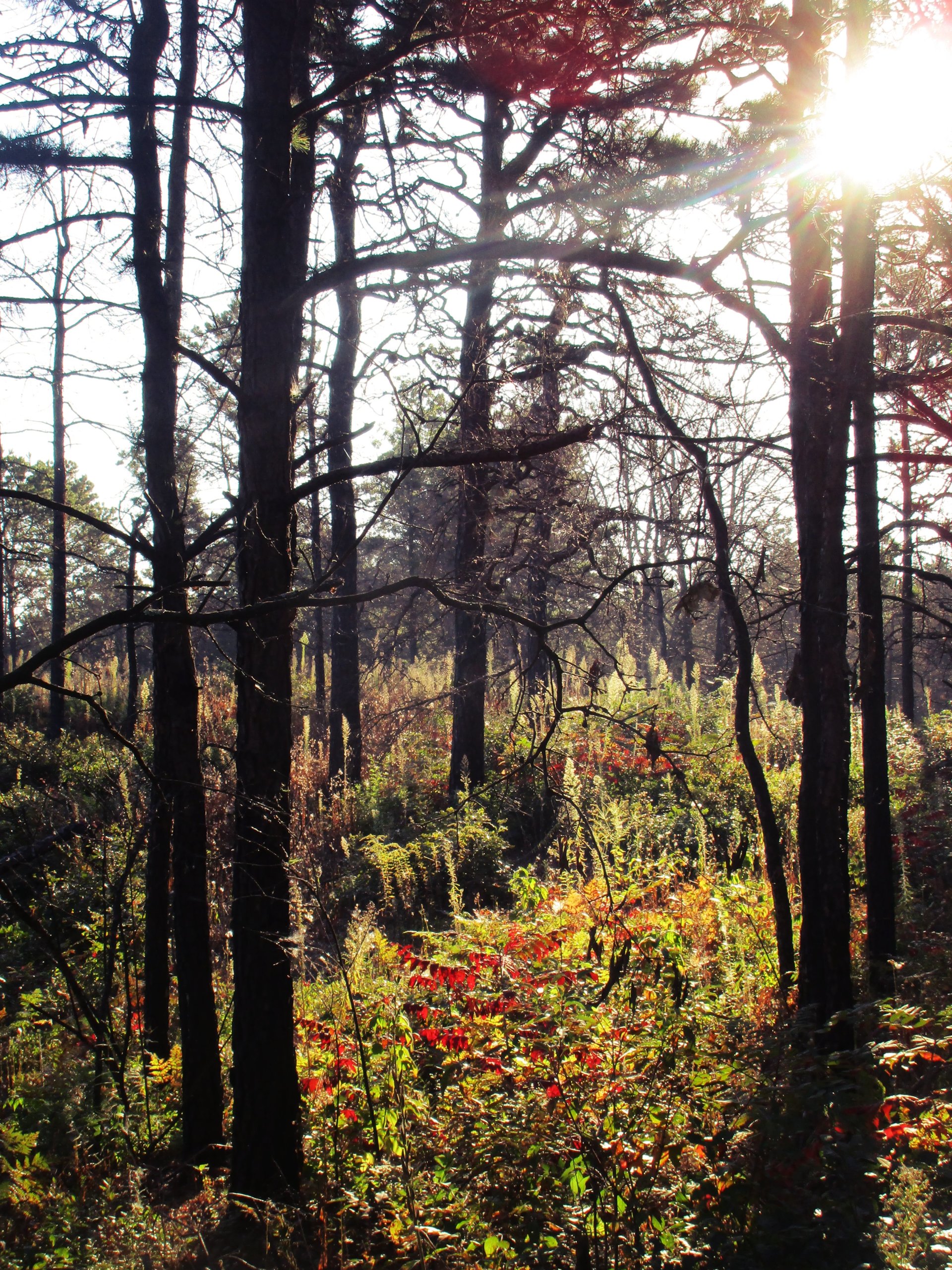By Tom Ellis, June/July 2021 Save the Pine Bush Newsletter
ON THE INTERNET: Long time Albany Pine Bush Preserve Commission (APBPC) Conservation Director Neil Gifford began his April 17, 2021 SPB meeting comments saying, “Thirty years of managing the world’s best scrub oak pitch pine barrens has taught us a lot.”
His topic was “The Pine Bush and the Pandemic: Update on the Preserve.” He offered an update on land protection, management and monitoring.
His comments focused on paleoecology. He said there is no perfect pine barrens anywhere the Pine Bush can be compared to. The Albany pine barrens, he said, is a rare community, and asked, “How do we know what we want to preserve and how to get there?”
He asked, “How old is the Albany pine barrens?” and answered that about 6000 years back, a pine-oak ecosystem emerged. Research into cores reveal a history of frequent fires. Major hot fires leave behind charcoal scars while smaller limited fires do not. Fire scar data, he said, correlates well with other history data for the region.
Fires occurred on average about every fifteen years from lightning, First Nations, accidentally, and intentionally. First Nations did not extinguish fires. This fire paradigm was the norm from de-glaciation to the European invasion.
Neil said it has taken years for APBPC staff to determine which types of fires benefited wildlife. Robust populations of rare species existed many times in the past. In recent centuries, fire suppression has become more common. Development reduced the size of the barrens from 25,000-50,000 acres to unhealthy fragmented sections of barrens in the 1900s.
The commission was established in 1988. Some 3400 hundred acres are now protected with at least 1000 more hoped for eventual protection. Controlled burns were first conducted from March to May in 1991. Early APBPC fires maintained low quality pine barrens but did not restore them. Next came mechanical and chemical treatments to restore high quality barrens. Applying mechanical treatments before fires led to improved fire control and results. Burns can now occur up to eleven months a year.
“Fire diversity,” or burning different sections each year, he said, “contributes to biodiversity.” Twenty-five years ago there were fourteen acres of lupines; now there are 700. A combination of actions led to desirable ecological results of grasses, shrubs, trees, and regenerating barrens. Specific species in the barrens that cannot live elsewhere are surrogate indicators of the barrens’ health.
Last year, 46,000 Karner Blue butterflies (KBB) were counted on thirteen percent of lupine acres sampled. The pandemic prevented hiring additional staff to count all the lupine acres. Neil thinks there may have been 100,000 KBB in the Pine Bush in 2020.
In addition to the iconic KBB, there are many other species resident in the Pine Bush including 180 bee and wasp species and 53 ant species. There is also an improved abundance and distribution of birds, including many that are declining nationally. Whip-poor-wills returned in 2017 after a thirty-year absence.
Neil said maintenance fires are achieving good results. Lupine that comes back after a fire leads to later seasons for the KBB, is better nutritionally, and stays green longer. He said, “Fires are really about effects.”
A Q&A followed. Neil said there were many more human visitors to the Pine Bush last year than in prior years, and, after fires, lupine is being seeded in areas without prior lLupine.
He said the Albany landfill is a major fragmenting feature in the Pine Bush, as is the Thruway. The last dump expansion was in 2005, KBB now live atop closed sections of the dump, the lowest elevation dump sections are now being seeded with the middle and upper sections to follow. After that, the dump will no longer be a fragmenting feature. No trees will be planted on the landfill due to the likelihood they would fall over on windy days damaging the landfill cap.
In response to a question about “lots of deforestation behind the visitors’ center and possible inadequate supervision of contractors, Neil said the tree cutting occurs to open the canopy so it will look like a barrens, and commission staff are watching the contractors daily.
Neil predicted the best time for viewing KBB in 2021 will be the first week of June and the second week of July. He said last year there were “clouds of Karner Blue butterflies.”
He said the commission has an electronic newsletter, little methane comes through the dump cap, some is burned, and electricity generated.
One man said he had walked near the landfill the prior weekend where “it looked like a tornado had hit.” Neil said that area is “not pretty” now but will be in a few years. Lynne Jackson said Blueberry Hill is very beautiful now after “looking like the Sahara” years earlier.
Lynne asked why Native peoples conducted burns. Neil offered many reasons: to increase berry production, fruits, nutritious foods, improved visibility when hunting and during wars, and to eliminate litter that would have created noise when hunting. Neil said “Natives lived on the land and in the land.”
